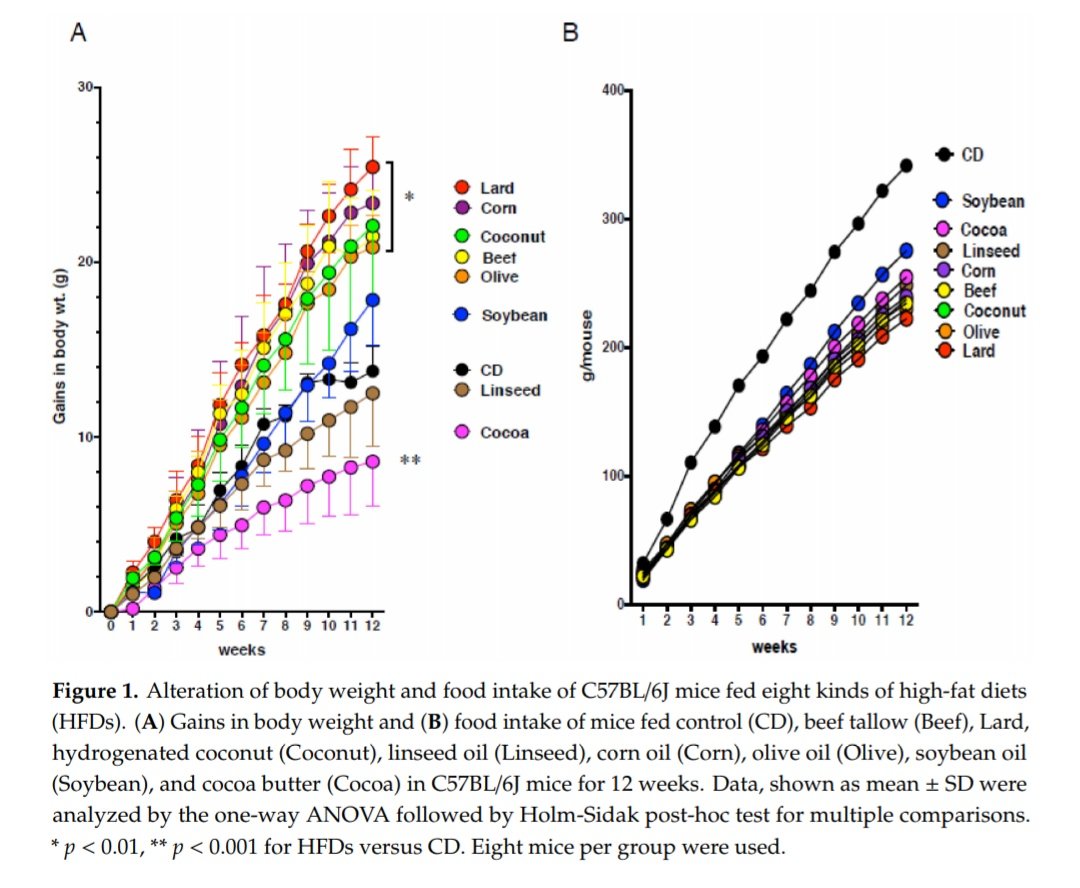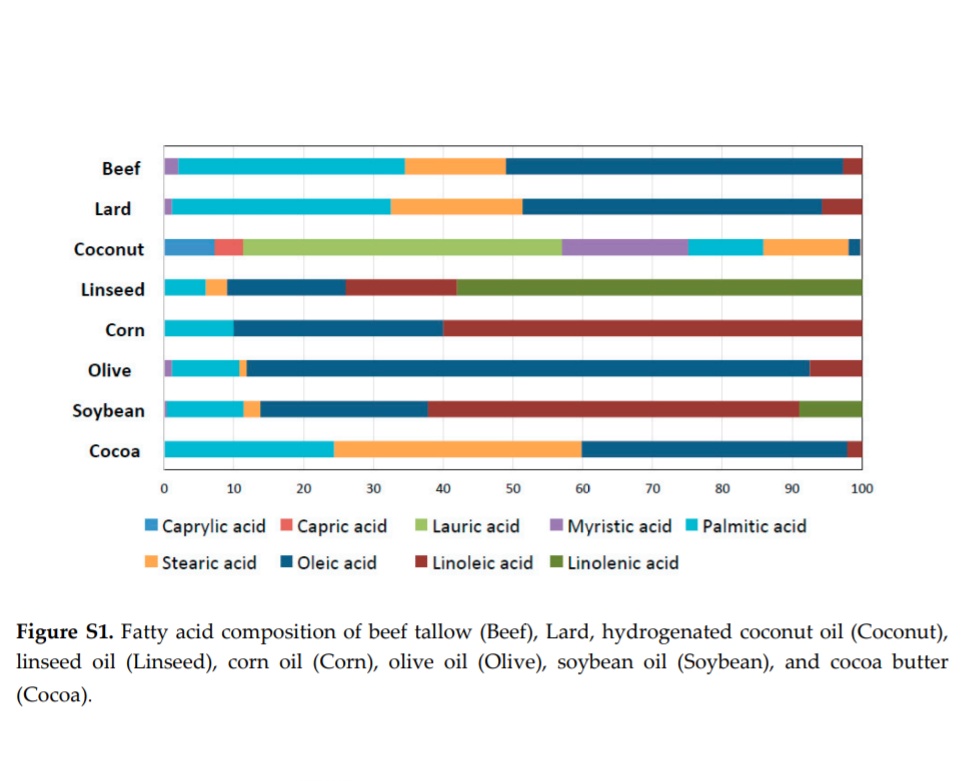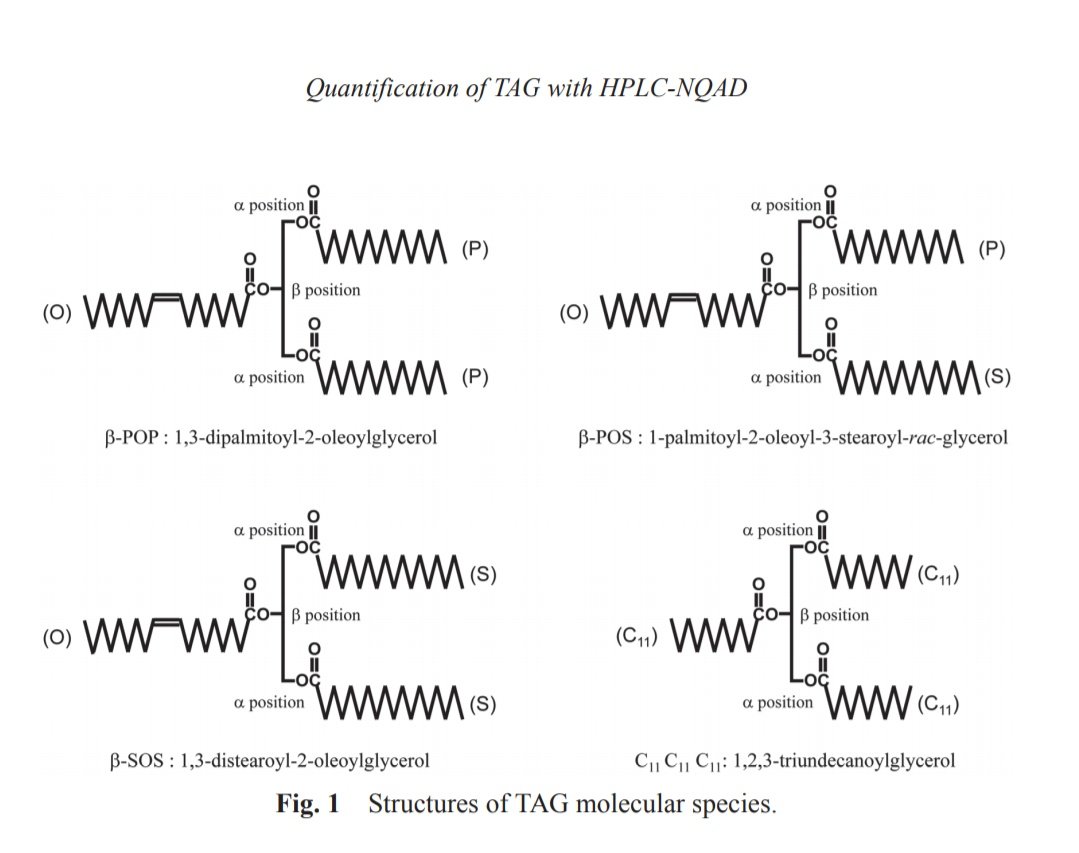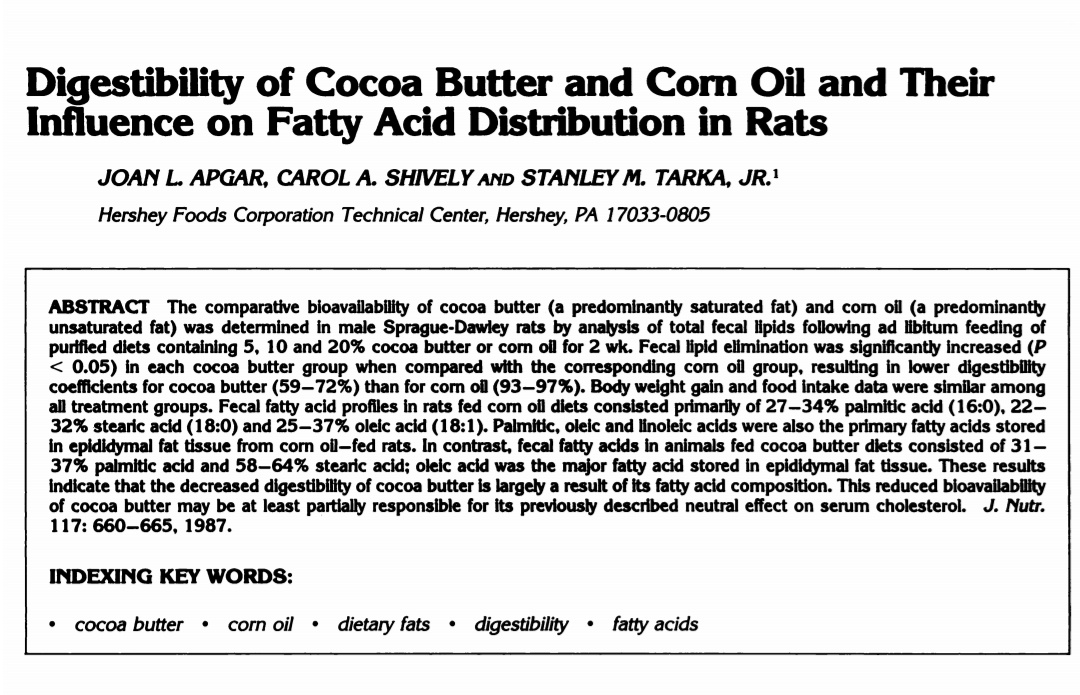Cocoa butter and it& #39;s stearic acid content are quite interesting when fed to mice.
Take this study for example. Mice fed high-fat diets with 60% of calories from 8 different fats or a low-fat control diet (CD). Look at the weight gain.
#app1-nutrients-11-02127">https://www.mdpi.com/2072-6643/11/9/2127/htm #app1-nutrients-11-02127">https://www.mdpi.com/2072-6643...
Take this study for example. Mice fed high-fat diets with 60% of calories from 8 different fats or a low-fat control diet (CD). Look at the weight gain.
#app1-nutrients-11-02127">https://www.mdpi.com/2072-6643/11/9/2127/htm #app1-nutrients-11-02127">https://www.mdpi.com/2072-6643...
Particularly compare the beef fat and cocoa butter diets. If you look at the fatty acid composition (in the supplementary data) the composition of those two fats is similar.
But the weight gain is different. The cocoa butter diet mice gained less weigh than control diet mice.
But the weight gain is different. The cocoa butter diet mice gained less weigh than control diet mice.
Both are mostly palmitic acid, stearic acid, and oleic acid with a similar small amount of linoleic acid. What is different about them is interesting but not simple to explain. I& #39;ll continue with this thread.
I think the difference is in something called "molecular species". Fats we eat are made up of triglycerides, which are three fatty acids joined to a glycerol. So there can be three positions each fatty acid can be in and each triglyceride can be a mix of fatty acids.
Cocoa butter is a bit unusual here as the stearic acid (the S in the diagram) in the triglyceride is in position 1 or 3. In animal fats like beef the stearic acid is more often in the middle 2 position. This matters when it comes to digestion (in mice).
https://www.jstage.jst.go.jp/article/jos/62/10/62_789/_article">https://www.jstage.jst.go.jp/article/j...
https://www.jstage.jst.go.jp/article/jos/62/10/62_789/_article">https://www.jstage.jst.go.jp/article/j...
This is quite complex to understand.
But when digested, triglycerides get chopped by enzymes into three fatty acids. The fatty acid in position 2 stays attached to the glycerol, while fatty acids in position 1 and 3 end up as free fatty acids. Then they mostly all get absorbed.
But when digested, triglycerides get chopped by enzymes into three fatty acids. The fatty acid in position 2 stays attached to the glycerol, while fatty acids in position 1 and 3 end up as free fatty acids. Then they mostly all get absorbed.
Stearic acid doesn& #39;t seem to get absorbed by the gut as fast as other fatty acids (still a bit unclear on this). As a free fatty acid it combines with minerals in the gut like calcium or sodium forming complexes that can& #39;t be absorbed by the gut (in mice). These get pooped out.
In cocoa butter all the stearic acid (in position 1 and 3) ends up as free fatty acids and a lot gets pooped out (in mice).
In animal fats like beef and lard the stearic acid in position 2 is protected from combining with minerals by the glycerol, so it still gets absorbed.
In animal fats like beef and lard the stearic acid in position 2 is protected from combining with minerals by the glycerol, so it still gets absorbed.
This 1987 study compared cocoa butter diets with corn oil diets in rats and measured the fats in their poop  https://abs.twimg.com/emoji/v2/... draggable="false" alt="💩" title="Dreckshaufen" aria-label="Emoji: Dreckshaufen">.
https://abs.twimg.com/emoji/v2/... draggable="false" alt="💩" title="Dreckshaufen" aria-label="Emoji: Dreckshaufen">.
Rats fed cocoa butter only absorbed 59–72% of it and pooped out a lot of stearic acid, while the corn oil was 93–97% absorbed.
https://academic.oup.com/jn/article-abstract/117/4/660/4770350">https://academic.oup.com/jn/articl...
Rats fed cocoa butter only absorbed 59–72% of it and pooped out a lot of stearic acid, while the corn oil was 93–97% absorbed.
https://academic.oup.com/jn/article-abstract/117/4/660/4770350">https://academic.oup.com/jn/articl...
I& #39;ve read a few other studies on this but hard to tweet them all.
It seems like it is difficult to interpret any rodent study that uses a cocoa butter diet and doesn& #39;t measure fecal fat excretion because they are probably absorbing less energy than the comparison diet.
It seems like it is difficult to interpret any rodent study that uses a cocoa butter diet and doesn& #39;t measure fecal fat excretion because they are probably absorbing less energy than the comparison diet.
What about humans?
"Cocoa butter, consumed as back chocolate within a normal mixed diet, has a high digestibility, similar to that of corn oil"
Unfortunately perhaps, unlike rodents we seem good at digesting cocoa butter. https://pubmed.ncbi.nlm.nih.gov/10694782/ ">https://pubmed.ncbi.nlm.nih.gov/10694782/...
"Cocoa butter, consumed as back chocolate within a normal mixed diet, has a high digestibility, similar to that of corn oil"
Unfortunately perhaps, unlike rodents we seem good at digesting cocoa butter. https://pubmed.ncbi.nlm.nih.gov/10694782/ ">https://pubmed.ncbi.nlm.nih.gov/10694782/...
However, if you add calcium to chocolate humans do poop out a bit more stearic acid.
This reduced "the absorbable energy value of the chocolate by approximately 9%"
Not going to make a lot of difference unless you only eat chocolate. https://pubmed.ncbi.nlm.nih.gov/11157320/ ">https://pubmed.ncbi.nlm.nih.gov/11157320/...
This reduced "the absorbable energy value of the chocolate by approximately 9%"
Not going to make a lot of difference unless you only eat chocolate. https://pubmed.ncbi.nlm.nih.gov/11157320/ ">https://pubmed.ncbi.nlm.nih.gov/11157320/...
As the last study says:
"Background: The digestibility of cocoa butter was reported in animal but not human studies to be low (60-70% and 89-94%, respectively)."
This makes it hard to know whether any rodent studies using cocoa butter have much relevance for humans.
"Background: The digestibility of cocoa butter was reported in animal but not human studies to be low (60-70% and 89-94%, respectively)."
This makes it hard to know whether any rodent studies using cocoa butter have much relevance for humans.
But I& #39;ve come across a few mouse studies that use a cocoa butter diet where the authors don& #39;t seem to be aware of this and it may be confounding their results.
Mouse studies are hard as it is difficult to know what you don& #39;t know that you don& #39;t know.
Mouse studies are hard as it is difficult to know what you don& #39;t know that you don& #39;t know.
Mouse diets are unusual compared to human diets in that they are quite high in minerals and the mineral mix is blended equally through the whole diet mix. So all the fat in the mouse diet is equally exposed to the minerals. May explain some of the strength of the effects.

 Read on Twitter
Read on Twitter


 .Rats fed cocoa butter only absorbed 59–72% of it and pooped out a lot of stearic acid, while the corn oil was 93–97% absorbed. https://academic.oup.com/jn/articl..." title="This 1987 study compared cocoa butter diets with corn oil diets in rats and measured the fats in their poop https://abs.twimg.com/emoji/v2/... draggable="false" alt="💩" title="Dreckshaufen" aria-label="Emoji: Dreckshaufen">.Rats fed cocoa butter only absorbed 59–72% of it and pooped out a lot of stearic acid, while the corn oil was 93–97% absorbed. https://academic.oup.com/jn/articl..." class="img-responsive" style="max-width:100%;"/>
.Rats fed cocoa butter only absorbed 59–72% of it and pooped out a lot of stearic acid, while the corn oil was 93–97% absorbed. https://academic.oup.com/jn/articl..." title="This 1987 study compared cocoa butter diets with corn oil diets in rats and measured the fats in their poop https://abs.twimg.com/emoji/v2/... draggable="false" alt="💩" title="Dreckshaufen" aria-label="Emoji: Dreckshaufen">.Rats fed cocoa butter only absorbed 59–72% of it and pooped out a lot of stearic acid, while the corn oil was 93–97% absorbed. https://academic.oup.com/jn/articl..." class="img-responsive" style="max-width:100%;"/>


